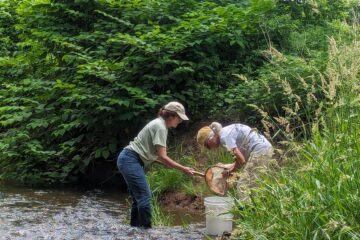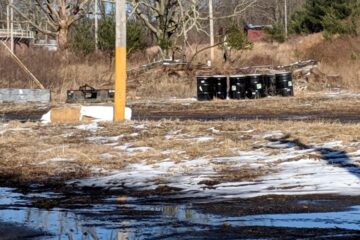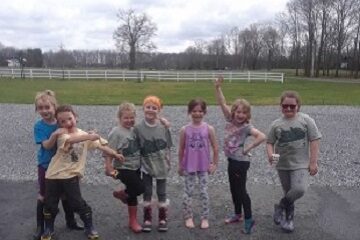Engage children in gardening by raising plants that are easy to grow and harvest. This lesson provides the opportunity for children to understand the importance of growing their own food as well as to open a discussion of healthy food choices. Created By Nancy Yard, RHA Educator
Level: Pre-K to Elementary
Duration: Sixty days
Setting: Backyard, windowsill or garden
Materials:
- One package of mixed leafy green seeds
- Vegetable potting soil or soil obtained from the garden
- Pot
- Plastic bin
- Measuring cups
- Jar with lid
- Mist bottle or small pitcher
- Spoon or trowel.
Background Information: Gardening connects children to the earth. Studies have shown that connections to nature lead to improved mental and physical health. This lesson connects children to nature through gardening while also engaging the child in healthy eating. Lettuce seeds germinate quickly and grow under many conditions with few pests. Lettuce does not do well in overly warm temperatures. The seed prefers room temperature to germinate but grow well in cool conditions. Lettuce seeds are tiny so it helps to mix them with sand or soil for small hands.
The Activity:
- Order seed from grocery store, garden center, or online. Select a seed mix that produces a variety of leafy greens.
- Select a container to fill with soil.
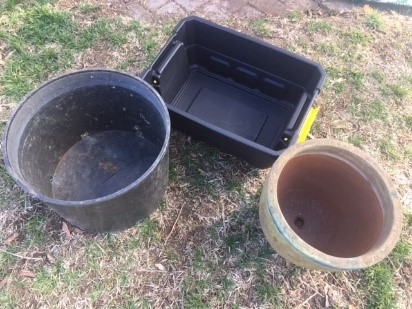
- Mix the soil with a cup of water until it feels damp throughout but does not puddle.
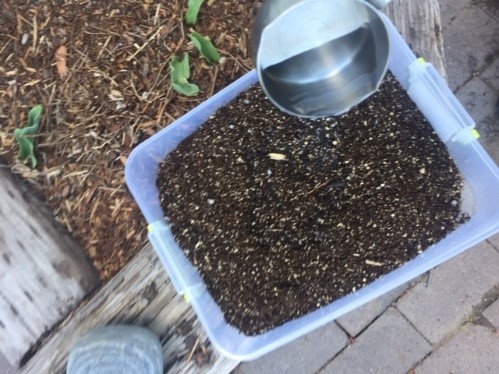
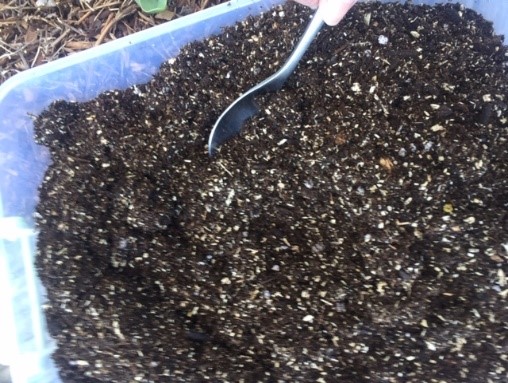
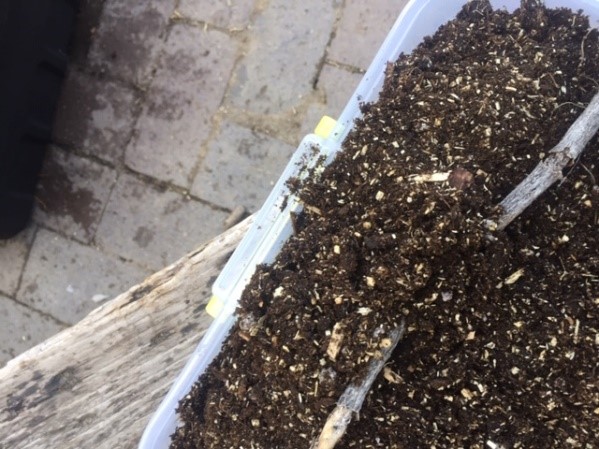
- Firm the soil so it is smooth and level using a stick, cardboard, or ruler.
- Mix seeds with dry soil or sand. This can be done by placing mixture in a recycled jar and shaking.
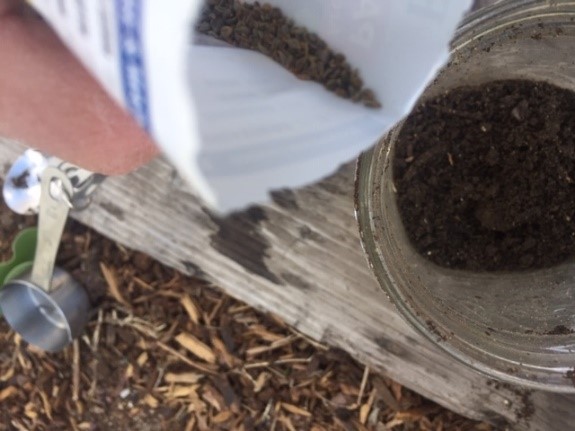
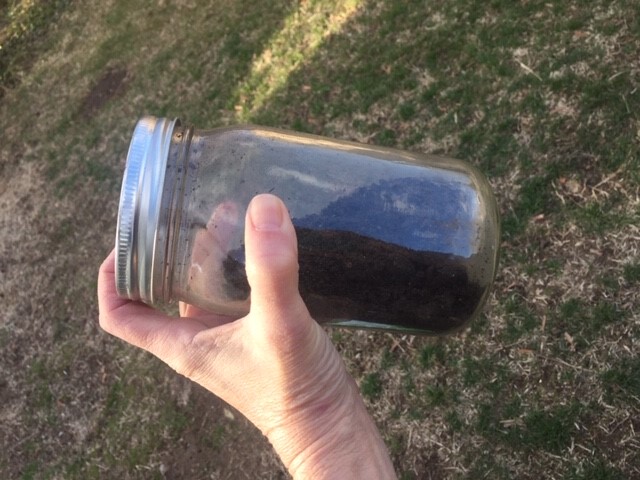
- Sprinkle the seed mixture over the top of the container spreading evenly
- Lightly water using a mister or small pitcher or measuring cup (watch for indentations in the soil).
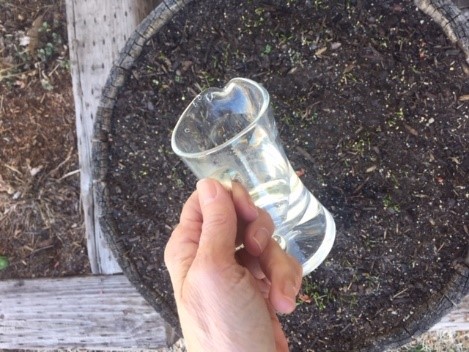
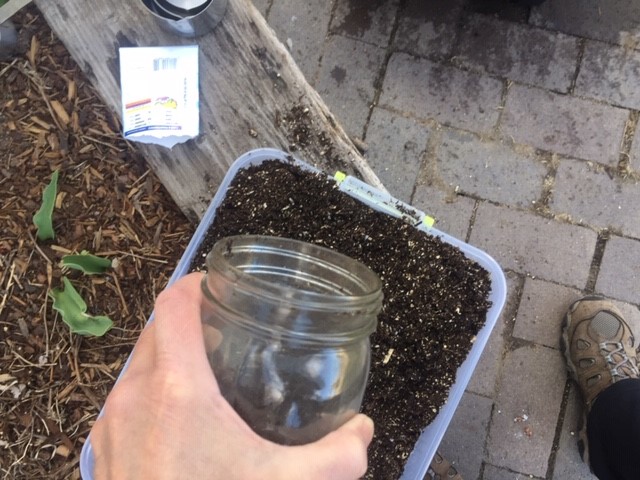
- Place container in a sunny window or sunny place outdoors. Lettuce tolerates cooler weather once it germinates and can be started directly outdoors in a sheltered location.
- Water every other day to keep seeds slightly moist. Increase watering as the lettuce grows to keep from wilting.
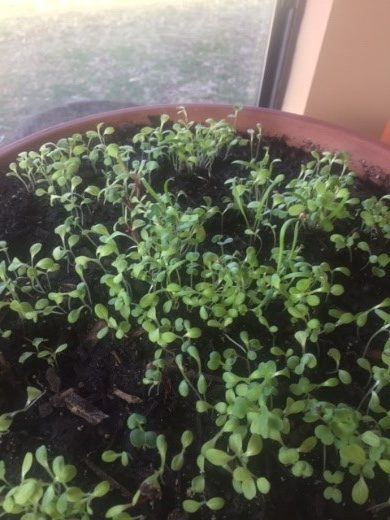
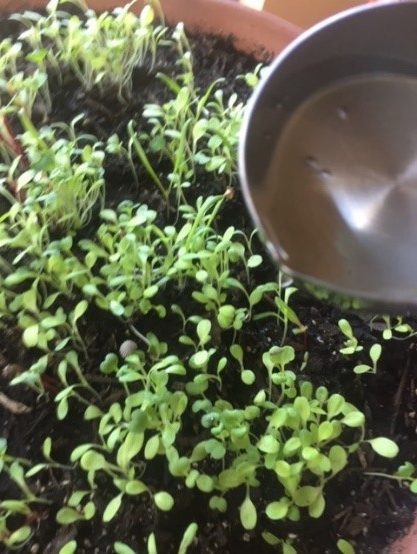
- When leaves are three to four inches tall begin to harvest. Cut leaves using clean scissors or pick. Wash and drain before eating. Use fresh lettuce on sandwiches, add in with other salad ingredients, or harvest all at once and make a fresh salad.
STEM Challenge: Create your own watering device from a clean recycled food container. Does your device wash out soil or leave holes or ditches in the soil? How can you change your device to make certain all the plants get watered or sprinkled evenly? Give your super improved watering device a name.
Wrap Up: Look up other heathy vegetables to grow. Research fruits and vegetables that grow in your area. Learn the difference between a fruit and vegetable. Help make a healthy grocery list. Continue gardening whether in containers or by making a small garden.
Share pictures of your growing lettuce, salad or misting device on the Raritan Headwaters Learning Community Facebook Page!
How did you like this activity? Please share any questions, comments, or photos that you and your child have on the Raritan Headwaters Learning Community Facebook Page!
More Raritan Headwaters Learning Resources

